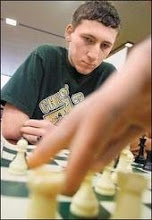1. Nf3
Played to avoid the usual mess we get into after 1. e4 e6 2. d4 d5 3. Nc3 Nf6 4. Bg5 Be7 5. e5 Nfd7 6. Bxe7 Qxe7
1... d5 2. d4 Nf6 3. e3 e6 4. Bd3 Nbd7 5. Nbd2 c5 6. c3

And finally we see what white is trying to do. White is playing the Colle system, a very good tool for players of all levels to learn about all sorts of different themes of chess. The main idea for white is to try to prepare an e4 advance.
6... cxd4 7. exd4
Now the question is if black's control over the c-file will be able to counter white's control over the e-file, and especially the e5 square.
7... Bd6 8. O-O O-O 9. Re1 Qc7 10. Qe2 a6
To prepare ...b5 when black will put the bishop on b7 and play for ...e5
11. a4! b6
Black abandons the ...b5 idea and just decides to develop the bishop.
12. Ne5
A thematic move.
12... Re8

The idea here is to prepare ...e5 and to also allow the knight on d7 to go to f8. There is a saying that you can't be mated with a knight on f8.
13. Ndf3 Nf8
Of course, taking the knight would be bad since dxe5 would force the other knight to move back, allowing Bxh7+! winning. But now, the knight can actually be captured, though white would be better.
14. Bg5 N6d7
Threatens ...f6.
15. Nxd7 Qxd7 16. Ne5 Qc7
Again threatens ...f6.
17. Bd2 f6

This next sequence is forced.
18. Nf3 e5 19. dxe5 fxe5 20. h3
This is to stop Bxh2 after ...e4 when eventually the pin on the pawn is broken and the knight has to move.
20... e4 21. Nd4

On Bc2 black plays 21. ...exf3! 22. Qxe8 Bh2+ 23. Kh1 (same variation for 23. Kf1) fxg2+ Kxg2 Bxh3+!! with a very strong attack. And now we have reached the critical point in the game where black has to decide what to do.
21... Bh2+!
A very deep positional move. The point is that black wants to play Be5 and trade on d4 to give white an isolated pawn to play against. But with the king on h1, black can go into a better ending because the king is one more move away from the action, and with the king on f1, black has the idea 22. ...Be5 23. Bb1 Bxd4 24. cxd4 a5 with the threat of Ba6 pinning the queen to king, and if either moves, then black gains the diagonal with advantage.
22. Kh1 Be5
Do you see now how this is better than the position with the king on g1?
23. Bb1 Bxd4 24. cxd4 Ne6 25. Qe3 Rf8 26. Ba2
Black has to watch for Qxe4 tricks and guard d5.
26... Rf5!
26... Rf5!

The best way to defend the pawn. Bb7 lacks activity and Qd6 ties down the queen to the pawn. Note that 27. g4 is unplayable due to 27. ...Rf3! completely crushing white.
27. Rec1
Forces the black queen to a better square.
27... Qd6
Overprotecting the pawn on d5.
28. Rc2 Bb7
Overprotecting again since the bishop has nowhere else to go. With the impending white doubling, black does the same.
29. Rac1 Raf8
The white rooks are powerful, but have nothing to do on the c-file. look at the squares controlled by black on the c-file the only squares controlled by white on the c-file are c1, c2, and c3. Conversely, look at the f-file squares controlled by black, all of the squares from f8 to the pawn on f2 are under black's control. So which doubling was better?
30. Kg1
To protect f2 again. See how the Bh2+! move made all the difference here? The gained tempo helps the attack crash through.
30... Nf4
"Let them eat cake."
31. Qxe4


There really isn't much better for white. Remember that the d-pawn is pinned, so this queen is not hanging.
31... Nxh3+!!
The finishing blow more or less. The knight must be captured, opening up the king with rooks breathing down his neck. If Kh1 Nxf2+ wins, on Kf1 Rxf2 and it is just a matter of how long white wants to suffer.
32. gxh3 Rxf2
Threatens Qh2#.
33. Qe5 Qg6+
Threatens Qg2#.
34. Qg5 Qd3

Threatens Rf1+ with a mating attack.
35. Qe3 Rf1+ 36. Kg2
Rxf1 loses too much material to try.
36... Qg6+ 37. Qg5 Qe4+!
The only winning move. The reason is that this check cannot be blocked by the queen.
38. Kg3 R8f3+ 39. Kh2 R3f2+ 40. Kg3 Rg2# 0-1
A great game by both sides, decided by subtle moves.







1 comment:
Great annotations. I'm looking forward to reading your notes on whatever games you submit for the futurity book.
Post a Comment